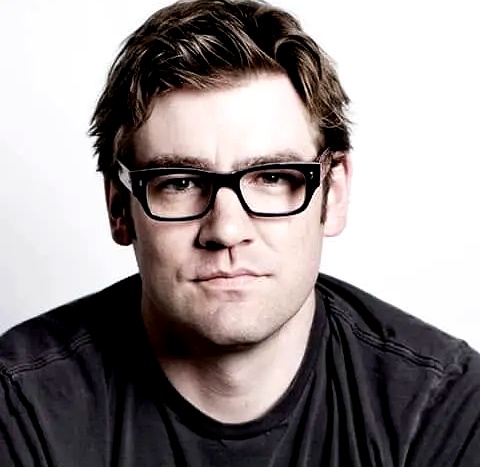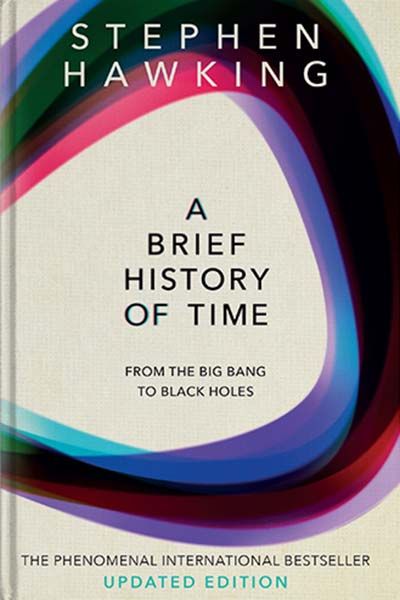Qed Book Summary
In 'Qed,' Richard Phillips Feynman invites readers into the mysterious world of quantum electrodynamics, unraveling the strange behaviors of light and matter. With his signature clarity and playful wit, Feynman demystifies complex concepts, making them accessible to all. He presents revolutionary ideas that challenge our traditional understanding of physics and reality itself. This book not only highlights the beauty of scientific inquiry but also sparks curiosity about the unseen forces that govern our universe. Join Feynman on an intellectual journey that promises to transform the way you perceive the world around you.
By Richard Phillips Feynman
Published: 2014
"The beauty of a flower is not in its shape or color but in the way it unfolds in time, revealing itself like the universe, layer by layer, in a dance of quantum mechanics."
Book Review of Qed
Provides an introduction to QED (quantum electrodynamics), that part of quantum field theory describing the interactions of light with charged particles. Using everyday language, spatial concepts, visualizations, and his renowned "Feynman diagrams" instead of advanced mathematics, the author communicates both the substance and spirit of QED to the layperson.
Book Overview of Qed
About the Book Author
Richard Phillips Feynman
Richard Phillips Feynman (1918-1988) was an American theoretical physicist, known for his work in quantum mechanics and particle physics. He was awarded the Nobel Prize in Physics in 1965 for his contributions to the development of quantum electrodynamics. Feynman was also a gifted educator and a popularizer of science, notable for his ability to convey complex scientific concepts in an accessible and engaging manner. His major works include "Surely You're Joking, Mr. Feynman!", "The Feynman Lectures on Physics", and "QED: The Strange Theory of Light and Matter". Feynman's writing style is characterized by clarity, humor, and a deep sense of curiosity about the universe.
Book Details
Key information about the book.
- Authors
- Richard Phillips Feynman
- Published
- October 2014
- Publisher
- N/A
- ISBN
- 0691164096
- Language
- English
- Pages
- 192
- Genres
- HistoryPopular ScienceScience and NatureScientific Discoveries
Purchase Options
Support local bookstores: BookShop gives a portion of each sale to independent bookshops!
Similar books you might like →
A Court of Thorns and Roses Book Summary
In "A Court of Thorns and Roses," Feyre Archeron, a skilled huntress, is thrust into a deadly faerie world after killing a wolf in the woods. Captured by Tamlin, a powerful High Fae lord, she discovers an enchanting realm steeped in danger and magic. As Feyre grapples with her feelings for Tamlin, a dark curse looms, threatening his home and all he loves. Chilling choices lead her into a treacherous game where betrayal and sacrifice become part of the dance. Will she embrace her fate and uncover her true strength before it’s too late?
The 10X Rule Book Summary
In "The 10X Rule," Grant Cardone unleashes a revolutionary philosophy that challenges you to aim ten times higher than your initial goals. He emphasizes that average thinking leads to mediocre results, while embracing massive action can propel you to extraordinary success. Through intense personal anecdotes and hard-hitting strategies, Cardone inspires readers to reject excuses and push boundaries in every aspect of their lives. Are you ready to break free from the status quo and achieve what you once deemed impossible? Dive in and discover how the 10X mindset can transform not just your goals, but your entire life.
The Code Book: The Secrets Behind Codebreaking Book Summary
In "The Code Book," Simon Singh takes readers on a captivating journey through the history of codes and code-breaking, revealing the secrets that have shaped civilizations and influenced wars. From ancient hieroglyphs to modern internet encryption, each chapter unveils the intricate dance between secrecy and revealing truth. Singh intertwines real-life espionage tales and mathematical puzzles, making cryptography accessible and thrilling. As you delve into the world of hidden messages and clandestine communications, you'll find yourself pondering the ethical implications of surveillance and privacy in today’s digital age. Can you crack the code of the past to foresee the future?
The Gene Book Summary
In "The Gene: An Intimate History," Siddhartha Mukherjee weaves together a compelling narrative that explores the profound impact of genetics on our identities and destinies. This journey spans from ancient discoveries to modern science, unraveling the stories of legendary geneticists and their groundbreaking findings. Mukherjee delves into the ethical dilemmas and societal implications of genetic manipulation, leaving readers questioning what it truly means to be human. With rich anecdotes and scientific insights, the book invites you to reflect on your own genetic legacy. Can our genes dictate our future, or do we hold the power to shape our own narratives?
A Brief History of Time Book Summary
In "A Brief History of Time," Stephen Hawking takes readers on a captivating journey through the cosmos, exploring the nature of time, black holes, and the universe's beginnings. With stunning clarity, he unravels complex scientific concepts, inviting everyone—from curious laypersons to seasoned physicists—to ponder the mysteries of existence. Hawking's charismatic storytelling challenges our perceptions of reality and time itself, posing profound questions about the universe's fate. As he merges science with philosophy, the reader is compelled to reflect on their place in a vast, enigmatic cosmos. Prepare to be inspired and awed by a narrative that transcends mere facts, pushing the boundaries of human understanding.
21 Lessons for the 21st Century Book Summary
In '21 Lessons for the 21st Century', Yuval Noah Harari navigates the complex landscape of today's world, tackling urgent questions about our future. From the impact of technology on society to the challenges of political stability, each lesson provokes thought and introspection. Harari explores key themes such as the rise of artificial intelligence, the significance of data, and the importance of meaning in an increasingly uncertain world. With a blend of history, philosophy, and science, the book invites readers to reflect on their roles in shaping a shared future. Will we adapt, or become obsolete? Dive in to uncover the lessons that could redefine humanity's path.
The History of the Decline & Fall of the Roman Empire Book Summary
In 'The History of the Decline & Fall of the Roman Empire,' Edward Gibbon meticulously chronicles the mighty empire's descent into chaos and obscurity. With eloquent prose, Gibbon unveils the interplay of political intrigue, moral decay, and military defeats that eroded Rome's power. His analysis does not merely recount events but delves into the philosophical implications of decline and the lessons for future societies. As empires rise and fall, engage with the timeless questions Gibbon poses about civilization itself. Dive into this monumental work to understand how history shapes our present and future.
The Making of the Atomic Bomb Book Summary
In 'The Making of the Atomic Bomb,' Richard Rhodes unveils the gripping narrative behind one of history's most monumental scientific achievements. With a blend of meticulous research and compelling storytelling, Rhodes explores the lives of the brilliant minds and the moral dilemmas they faced while racing against time and adversaries. As the project transforms from a theoretical concept to a world-altering weapon, readers are drawn into the political intrigue and human drama that fueled the Manhattan Project. This book not only delves into the science of atomic energy but also poses profound questions about human ambition and ethical responsibility. What does it mean to wield such immense power, and at what cost does progress come?
Showing 8 of 24 similar books
Similar Book Recommendations →

Chris Dixon's Book Recommendations
Chris Dixon is a notable venture capitalist and technology entrepreneur, best known for his influential role as a general partner at Andreessen Horowitz, where he leads investments in cryptocurrency and blockchain technology. Before joining the firm, Dixon co-founded two startups: SiteAdvisor, a web security company acquired by McAfee, and Hunch, a recommendation engine acquired by eBay. In addition to his investment career, Dixon is a prolific writer and thought leader on technology and innovation, contributing insightful essays and articles to various platforms such as his personal blog and Medium. His writings often explore the future of technology, the internet, and the impact of blockchain, making significant contributions to contemporary tech literature. Dixon's work has earned him recognition as a visionary in both the tech and literary worlds.

Naval Ravikant's Book Recommendations
Naval Ravikant is an entrepreneur, angel investor, and philosopher, best known as the co-founder of AngelList, a platform that connects startups with investors. Ravikant is a prolific thinker and writer on topics such as startups, investing, and personal well-being, sharing his wisdom through essays, podcasts, and social media. He has invested in over 100 companies, including Uber, Twitter, and Yammer, making him one of Silicon Valley’s most successful angel investors. Ravikant is also known for his philosophical musings on wealth, happiness, and the meaning of life, which have garnered him a large and dedicated following.

Charlie Munger's Book Recommendations
Charlie Munger is an American investor, businessman, and philanthropist, best known as the vice chairman of Berkshire Hathaway, where he partners with Warren Buffett. Renowned for his insights on investment strategies and mental models, Munger has significantly influenced the world of finance. His notable literary contributions include "Poor Charlie's Almanack," a compilation of his speeches and writings that distill his wisdom on decision-making and business principles. Munger's work emphasizes the importance of multidisciplinary thinking and continuous learning. Beyond his financial acumen, he is celebrated for his charitable efforts, particularly in education and healthcare.

Drew Houston's Book Recommendations
Drew Houston is an accomplished American entrepreneur best known for co-founding Dropbox, a widely-used cloud storage service, in 2007. As the CEO, he has led the company to serve millions of users worldwide and become a key player in the tech industry. Although not primarily known for literature, Houston has shared his entrepreneurial insights and experiences through various interviews and public speaking engagements, offering valuable lessons to aspiring business leaders. His work has significantly influenced the way people and organizations manage and share digital content. Houston's innovative vision continues to shape the future of cloud computing and digital collaboration.

Nassim Nicholas Taleb's Book Recommendations
Nassim Nicholas Taleb is a Lebanese-American author, scholar, and risk analyst, best known for his work on uncertainty, probability, and risk. His books, including The Black Swan and Antifragile, explore how rare and unpredictable events shape the world and how individuals and systems can become more resilient to shocks. Taleb’s insights on risk management have influenced fields ranging from finance to medicine, and he is known for his outspoken criticism of conventional wisdom. His ideas about randomness, decision-making, and the limitations of human knowledge have made him a leading thinker in modern economics and philosophy.

David Deutsch's Book Recommendations
David Deutsch is a British physicist and philosopher, widely known for his contributions to quantum mechanics, particularly in the area of quantum computation. He is the author of The Fabric of Reality and The Beginning of Infinity, where he explores the nature of knowledge, progress, and the future of human civilization. Deutsch’s work in quantum computing laid the groundwork for the development of quantum algorithms, positioning him as a pioneer in this emerging field. He is a proponent of the multiverse theory and has offered profound insights into the nature of reality, science, and human potential. Deutsch’s philosophical work emphasizes the power of reason and creativity in solving problems and expanding human understanding. His ideas have had a significant impact on the fields of theoretical physics and epistemology, making him a leading thinker on the future of science and technology. He continues to inspire both scientists and lay readers with his optimistic vision of a world shaped by knowledge and innovation.

Cleo Abram's Book Recommendations
Cleo Abram is a distinguished journalist and content creator known for her incisive storytelling and engaging multimedia presentations. She gained widespread recognition as a producer and host for Vox's acclaimed series, "Glad You Asked," where she explored complex topics with clarity and depth. Abram's work often intersects with technology and culture, making intricate subjects accessible to a broad audience. In addition to her journalistic endeavors, she has contributed thought-provoking essays and articles to various esteemed publications. Her innovative approach to storytelling continues to influence and inspire both readers and aspiring journalists.

Bill Gates's Book Recommendations
Bill Gates, co-founder of Microsoft Corporation, is a pioneering figure in the tech industry, having played a key role in the personal computer revolution. His work at Microsoft, particularly the development of Windows, transformed software and computing globally. Beyond his technology contributions, Gates is also a prolific author, with notable works such as "The Road Ahead" and "Business @ the Speed of Thought," which offer insights into the future of technology and business. Additionally, his philanthropic efforts through the Bill & Melinda Gates Foundation have had a profound impact on global health, education, and poverty. Gates continues to influence both technology and literature with his forward-thinking perspectives and innovative ideas.
Showing 8 of 16 related collections
“The beauty of a flower is not in its shape or color but in the way it unfolds in time, revealing itself like the universe, layer by layer, in a dance of quantum mechanics.”
Qed
By Richard Phillips Feynman
Frequently Asked Questions
Explore Our Catalogue
Discover a world of knowledge through our extensive collection of book summaries.
Genres
Genres
Genres
Featured Collections
- Top Book Club Picks
- One-Stop Nutrition
- Summer Reads 2024
- Best Beach Reads 2024
- Work-Life Balance Guide
- Time Management
- Healthy Foods
- Entrepreneur Toolkit
- Mind & Body Wellness
- Future Tech Insights
- Leadership Essentials
- Financial Freedom
- Sci-Fi Masterpieces
- Parenting 101
- Books That Became Blockbusters
- Guide to a Healthy Pregnancy










